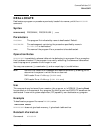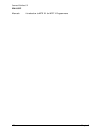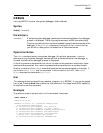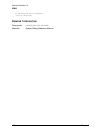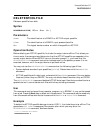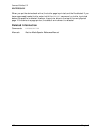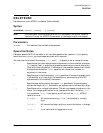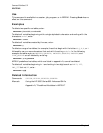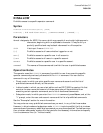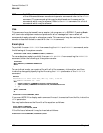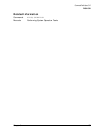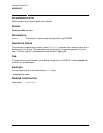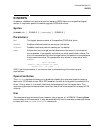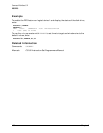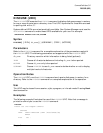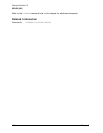
Chapter 3 185
Command Definitions C-E
DISALLOW
DISALLOW
Prohibits access to a specific operator command.
Syntax
DISALLOW FILE=formaldesignator[ ;SHOW]
DISALLOW] [ @.@ user.@ @.user user.acct ] ;COMMANDS=command [ ,command,...]
Parameters
formal- designator An ASCII file name, which may consist of one to eight alphanumeric
characters, beginning with an alphabetic character. It may be fully or
partially qualified and may be back-referenced in a file equation.
SHOW Lists input lines on $STDLIST.
@.@ Prohibits access to all users whether logged on or not.
user.@ Prohibits access to a specific user in all accounts.
@.acct Prohibits access to all users in a specific account.
user.acct Prohibits access to a specific user in a specific account.
command The names of those commands to which the user is prohibited access.
Operation Notes
The operator uses the DISALLOW command to prohibit a user from executing specific
operator commands previously allowed with the ALLOW command. You can use the
command in any of three ways:
• Direct mode, in which you enter specific user names and account and the list of
prohibited commands directly at the console.
• Indirect mode, in which you use a text editor such as EDIT/3000 to create a file that
contains the user name and account of those users who will be prohibited from
executing certain operator commands, and a list of disallowed commands.
• Subsystem mode, in which you enter the DISALLOW command, press
Return, and, at the
">" prompt, enter the user and account names and the list of prohibited commands.
See the "Examples" section for more information.
You may enter as many prohibited commands as you want, in any of the three modes.
However, in direct mode and subsystem mode, DISALLOW acts to prohibit the first nineteen
commands and ignores any additional commands you may have specified. To disallow more
than nineteen commands, create a file that contains the necessary information and specify
it on the command line (i.e. "Indirect mode").



